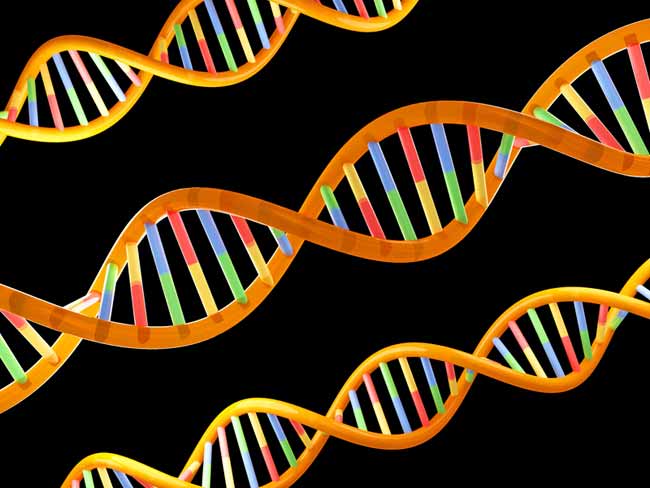Life As We Know It Nearly Created in Lab

One of life's greatest mysteries is how it began. Scientists have pinned it down to roughly this:
Some chemical reactions occurred about 4 billion years ago — perhaps in a primordial tidal soup or maybe with help of volcanoes or possibly at the bottom of the sea or between the mica sheets — to create biology.
Now scientists have created something in the lab that is tantalizingly close to what might have happened. It's not life, they stress, but it certainly gives the science community a whole new data set to chew on.
The researchers, at the Scripps Research Institute, created molecules that self-replicate and even evolve and compete to win or lose. If that sounds exactly like life, read on to learn the controversial and thin distinction.
Know your RNA
To understand the remarkable breakthrough, detailed Jan. 8 in the early online edition of the journal Science, you have to know a little about molecules called RNA and DNA.
DNA is the software of life, the molecules that pack all the genetic information of a cell. DNA and the genes within it are where mutations occur, enabling changes that create new species.
Sign up for the Live Science daily newsletter now
Get the world’s most fascinating discoveries delivered straight to your inbox.
RNA is the close cousin to DNA. More accurately, RNA is thought to be a primitive ancestor of DNA. RNA can't run a life form on its own, but 4 billion years ago it might have been on the verge of creating life, just needing some chemical fix to make the leap. In today's world, RNA is dependent on DNA for performing its roles, which include coding for proteins.
If RNA is in fact the ancestor to DNA, then scientists have figured they could get RNA to replicate itself in a lab without the help of any proteins or other cellular machinery. Easy to say, hard to do.
But that's exactly what the Scripps researchers did. Then things went surprisingly further.
'Immortalized'
Specifically, the researchers synthesized RNA enzymes that can replicate themselves without the help of any proteins or other cellular components, and the process proceeds indefinitely. "Immortalized" RNA, they call it, at least within the limited conditions of a laboratory.
More significantly, the scientists then mixed different RNA enzymes that had replicated, along with some of the raw material they were working with, and let them compete in what's sure to be the next big hit: "Survivor: Test Tube."
Remarkably, they bred.
And now and then, one of these survivors would screw up, binding with some other bit of raw material it hadn't been using. Hmm. That's exactly what life forms do ...
When these mutations occurred, "the resulting recombinant enzymes also were capable of sustained replication, with the most fit replicators growing in number to dominate the mixture," the scientists report.
The "creatures" — wait, we can't call them that! — evolved, with some "species" winning out.
"It kind of blew me away," said team member Tracey Lincoln of the Scripps Research Institute, who is working on her Ph.D. "What we have is non-living, but we've been able to show that it has some life-like properties, and that was extremely interesting."
Indeed.
Knocking on life's door
Lincoln's advisor, professor Gerald Joyce, reiterated that while the self-replicating RNA enzyme systems share certain characteristics of life, they are not life as we know it.
"What we've found could be relevant to how life begins, at that key moment when Darwinian evolution starts," Joyce said in a statement.
Joyce's restraint, clear also on an NPR report of the finding, has to be appreciated. He allows that some scientists familiar with the work have argued that this is life. Another scientist said that what the researchers did is equivalent to recreating a scenario that might have led to the origin of life.
Joyce insists he and Lincoln have not created life: "We're knocking on that door," he says, "but of course we haven't achieved that."
Only when a system is developed in the lab that has the capability of evolving novel functions on its own can it be properly called life, Joyce said. In short, the molecules in Joyce's lab can't evolve any totally new tricks, he said.
- Evolution News, Information and Images
- Greatest Mysteries: How Did Life Arise on Earth?
- Top Ten Unexplained Phenomena
Robert is an independent health and science journalist and writer based in Phoenix, Arizona. He is a former editor-in-chief of Live Science with over 20 years of experience as a reporter and editor. He has worked on websites such as Space.com and Tom's Guide, and is a contributor on Medium, covering how we age and how to optimize the mind and body through time. He has a journalism degree from Humboldt State University in California.










